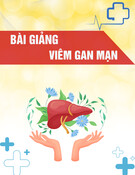
vietnam medical journal n01 - NOVEMBER - 2024
200
5. Pollak, U.; Bronicki, R. A.; Achuff, B.-J.;
Checchia, P. A. Postoperative Pain Management
in Pediatric Patients Undergoing Cardiac Surgery:
Where Are We Heading? J Intensive Care Med
2019, 088506661987143. https://doi.org/10.
1177/0885066619871432.
6. Yeung, J. H.; Gates, S.; Naidu, B. V.; Wilson,
M. J.; Gao Smith, F. Paravertebral Block versus
Thoracic Epidural for Patients Undergoing
Thoracotomy. Cochrane Database of Systematic
Reviews 2016, 2016 (3). https://doi.org/10.1002/
14651858.CD009121.pub2.
7. Scarfe, A. J.; Schuhmann-Hingel, S.;
Duncan, J. K.; Ma, N.; Atukorale, Y. N.;
Cameron, A. L. Continuous Paravertebral Block
for Post-Cardiothoracic Surgery Analgesia: A
Systematic Review and Meta-Analysis. Eur J
Cardiothorac Surg 2016, 50 (6), 1010–1018.
https://doi.org/10.1093/ejcts/ezw168.
8. Álvarez-Baena, L.; Hervías, M.; Ramos, S.;
Cebrián, J.; Pita, A.; Hidalgo, I. Continuous
Thoracic Paravertebral Analgesia after Minimally
Invasive Atrial Septal Defect Closure Surgery in
Pediatric Population: Effectiveness and Safety
Analysis. Revista Española de Anestesiología y
Reanimación (English Edition) 2022, 69 (5), 259–
265. https://doi.org/10.1016/ j.redare.
2021.05.010.
9. Altun, D. Atrial Septal Defect Closure via Mini-
Thoracotomy in Pediatric Patients: Postoperative
Analgesic Effect of Intercostal Nerve Block. Turk
Gogus Kalp Dama 2020, 28 (2), 257–263.
https://doi.org/10.5606/tgkdc.dergisi.2020.19104.
10. Sahajanandan, R.; Varsha, A.; Kumar, Ds.;
Kuppusamy, B.; Karuppiah, S.; Shukla, V.;
Thankachen, R. Efficacy of Paravertebral Block
in “Fast-Tracking” Pediatric Cardiac Surgery -
Experiences from a Tertiary Care Center. Ann
Card Anaesth 2021, 24 (1), 24.
https://doi.org/10.4103/aca.ACA_83_19.
ĐÁNH GIÁ KẾT QUẢ SỚM CỦA CAN THIỆP NỘI MẠCH ĐIỀU TRỊ HẸP,
TẮC ĐỘNG MẠCH DƯỚI ĐÒN
Lâm Văn Nút1, Phạm Xuân Vinh1, Nguyễn Tiến Viễn2
TÓM TẮT49
Mục tiêu nghiên cứu: Khảo sát các đặc điểm về
lâm sàng, cận lâm sàng hẹp tắc động mạch dưới đòn
(HTĐMDĐ) và đánh giá kết quả sớm của can thiệp nội
mạch (CTNM) trong HTĐMDĐ. Phương pháp: Nghiên
cứu hồi cứu mô tả hàng loạt các trường hợp thông
qua tất cả hồ sơ bệnh án của các bệnh nhân (BN)
chẩn đoán HTĐMDĐ được điều trị CTNM tại Khoa
Phẫu thuật Mạch máu Bệnh viện Chợ Rẫy từ 12/2013
đến 04/2022. Kết quả: Lâm sàng của BN HTĐM chi
trên có triệu chứng thường gặp nhất là đau chi
(100%), tê (84%), chênh áp 2 tay >15mmHg (72%)
và mất mạch (68%). Tất cả 100% động mạch dưới
đòn được ghi nhận có tổn thương tắc, hẹp tại đoạn
đầu, trong đó 5 BN hẹp cả đoạn gần và đoạn giữa
(20%), 01 BN hẹp tới đoạn xa (4%). Số trường hợp
hẹp từ 70-95% chiếm 65,39%, 4 BN hẹp 96- 99%
(15,38%) và 5 BN tắc hoàn toàn (19,23%). Can thiệp
thành công ở 24 BN (96%). Các BN sau can thiệp đều
có độ thông tốt, chỉ có 1 BN còn hẹp nhẹ <30% và 2
BN hẹp tồn lưu ≥30%. Về biến chứng sau khi can
thiệp có 2 BN tụ máu tại vị trí đâm kim (8%). Tất cả
BN can thiệp thành công đều có sự cải thiện về triệu
chứng lâm sàng, tình trạng đau chi giảm đáng kể. Về
triệu chứng mất mạch, 01 BN can thiệp thất bại, tất cả
BN còn lại đều bắt được mạch sau khi can thiệp. Kết
luận: CTNM trong HTĐMDĐ mang lại kết quả thành
1Bệnh viện Chợ Rẫy
2Đại học Y Dược Thành phố Hồ Chí Minh
Chịu trách nhiệm chính: Lâm Văn Nút
Email: nutlamvan@yahoo.com
Ngày nhận bài: 9.8.2024
Ngày phản biện khoa học: 16.9.2024
Ngày duyệt bài: 14.10.2024
công cao về cả mặt cận lâm sàng và lâm sàng, với tỷ
lệ biến chứng thấp và sự cải thiện rõ rệt các triệu
chứng sau can thiệp, đồng thời duy trì lưu thông mạch
máu hiệu quả sau một tháng can thiệp.
Từ khóa:
can
thiệp nội mạch, hẹp tắc động mạch dưới đòn.
SUMMARY
EVALUATE THE EARLY RESULT OF
ENDOVASCULAR TREATMENT FOR SUBCLAVIAN
ARTERY STENOSIS OR OCCLUSION
Objectives: To survey the clinical and
paraclinical characteristics of subclavian artery
stenosis and to evaluate the early results of
endovascular intervention for treating this condition.
Methods: This is a retrospective study of patients
who underwent endovascular intervention for
subclavian artery stenosis at the Department of
Vascular Surgery at Cho Ray Hospital from December
2013 to April 2022. Results: The most common
symptoms are limb pain (100%), numbness (84%),
the pressure difference between arms >15mmHg
(72%), and pulse loss (68%). All 100% subclavian
arteries were recorded to have occlusive lesions and
stenosis at the first segment, including 5 cases of
stenosis in both the proximal and middle segments
(20%) and 1 case of stenosis reaching the distal
segment (4%). Stenosis from 70-95% accounts for
65.39%, 4 cases of 96-99% stenosis (15.38%) and 5
cases of complete obstruction (19.23%). Successful
intervention is 24 cases (96%). After intervention, all
patients had good patency, with only 1 case of mild
stenosis <30% and 2 case of residual stenosis ≥30%.
Regarding complications after intervention, there were
2 cases of hematoma at the needle puncture site
(8%). All patients who had successful interventions
showed an improvement in clinical symptoms, with







































